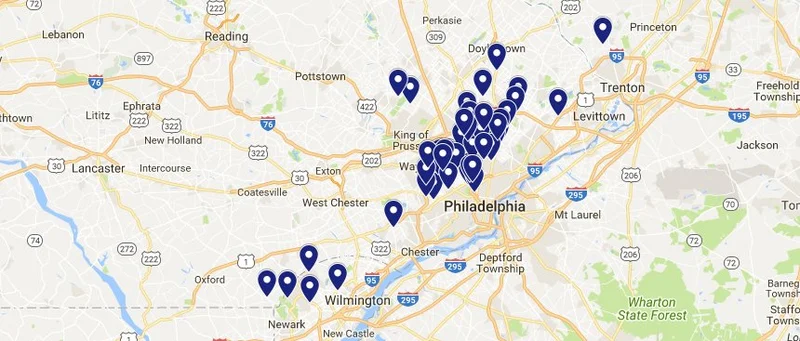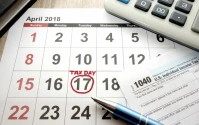Philadelphia's Transit System Is a Financial Black Hole. Here's the Data.
*
The scene on a SEPTA platform lately is one of managed chaos. You can almost feel the collective sigh as another packed train rolls past without stopping, its windows fogged with the breath of commuters crammed inside. This isn't an anomaly; it's the new baseline. Following a series of fires on its aging railcars, the Federal Railroad Administration mandated inspections, pulling dozens of the 50-year-old Silverliner IV cars from service. On one day, 55 trains were canceled. On the next, 12. The `septa schedule` has become less of a timetable and more of a suggestion.
The official narrative from the Southeastern Pennsylvania Transportation Authority is one of fiscal necessity. Facing a $213 million operating budget shortfall, the board instituted a fare hike of roughly 21%—to be more exact, 21.5%, bumping the base `septa fare` from $2.50 to $2.90. This, they claim, was the only way to balance the budget without gutting the `septa service` that millions rely on.
On the surface, it’s a familiar story of an underfunded public utility making tough choices. But when you start to scrutinize the numbers, the narrative frays. The problem isn't just about old trains and tight budgets. The data suggests a deeper, more systemic dysfunction. The entire financial model appears to be built around a black hole of missing revenue, a discrepancy so vast it calls every other assumption into question.
The Anatomy of a Contradiction
The flashpoint for this analysis is a Lawsuit seeks to undo SEPTA fare increase, refund riders – Metro Philadelphia filed by attorney George Bochetto. While lawsuits are common, this one contains a numerical claim that should stop everyone in their tracks. It alleges that SEPTA’s self-reported financial crisis is, at least in part, a fabrication.
Let’s establish the baseline. SEPTA projects the recent fare hike will generate an additional $571,000 per week, which annualizes to about $31 million. This is the amount they deemed critical to their solvency. Now, let’s look at the revenue they don't collect. According to SEPTA's own transit officials, fare evasion—turnstile-jumping and the like—costs the authority between $30 and $50 million a year. It’s a significant sum, roughly equivalent to the revenue gained from the new fare hike.
But the lawsuit presents a wildly different figure. Based on their own analysis, which they attribute to news coverage, rider interviews, and public observation, Bochetto’s firm calculates the annual loss from fare evasion to be somewhere between $300 million and $400 million.

Let’s pause and process that. This isn't a minor disagreement over accounting methods. This is an order-of-magnitude chasm. One party claims a loss of $50 million, while the other claims a loss that is, at its low end, six times larger. I've looked at hundreds of financial filings and legal challenges, and a discrepancy of this magnitude is almost unheard of outside of outright fraud or systemic incompetence. How can an organization responsible for a multi-billion-dollar budget have such a fundamentally uncertain grasp on its own top-line revenue?
This single data point invalidates almost every public-facing discussion about the budget. If SEPTA is losing an amount equivalent to its entire operating shortfall to fare evasion, then a 21.5% fare hike on paying customers isn't a solution; it's an absurdity. It’s like trying to patch a hole in a dam with a piece of chewing gum while a torrent of water gushes through a different, much larger hole right next to it.
Compounding Variables and Unanswered Questions
SEPTA’s response to the lawsuit's claim is that they have "no data or evidence to support such a number." This is, frankly, the most alarming part of the entire situation. The implicit admission is that they don't have a robust system for measuring non-payment. If their own estimate of $30-$50 million is just a guess, and the lawsuit's $300-$400 million is also a guess, then the truth is that nobody knows how much money is being lost. The system is flying blind.
This lack of data integrity infects every other financial decision. The lawsuit points to the authority’s Service Stabilization Fund, which reportedly held over $300 million as of September. The plaintiffs argue this rainy-day fund could have been used to avert the fare increase. Meanwhile, SEPTA received state approval to reallocate nearly $400 million in capital funds (money intended for long-term assets like trains and tracks) to cover its short-term operating budget. This is a classic move of a financially distressed entity—sacrificing the future to survive the present.
The capital needs are staggering. Replacing the half-century-old Silverliner IV fleet, the very trains whose failures are causing the current service meltdown on the `regional rail septa`, is a projected $2 billion cost. How can an organization make a credible case for that level of investment when it can't accurately account for the revenue it's supposed to be collecting today?
The attempts to address evasion seem reactive and piecemeal. New fare gates at 69th Street Transportation Center have reportedly reduced evasion there by about 20%. Citations are up 74% year-over-year. But these are localized fixes for what appears to be a systemic hemorrhage. Without a credible, system-wide baseline for the scale of the problem, how can anyone measure if these initiatives are successful or just expensive window dressing? What is the actual return on investment for new fare gates if the underlying problem is ten times larger than you think?
The Real Deficit Is in the Data
The public debate is centered on the wrong question. We are arguing about whether a 40-cent fare hike is fair to riders who are receiving demonstrably worse service. This is a distraction. The core crisis at SEPTA isn't a lack of funds; it's a lack of credible information.
Before any more discussions about fare structures, service levels, or billion-dollar capital projects, the authority owes its riders—and the taxpayers who subsidize it—one thing: an independent, transparent, and comprehensive audit of its revenue collection systems. We need a real number on fare evasion, one that both sides can accept.
Until SEPTA can accurately count its own customers, every budget it produces is a work of fiction. The riders being asked to pay more aren't just covering a financial shortfall. They're paying a surcharge for an organization that is, by its own admission, operating in the dark.









